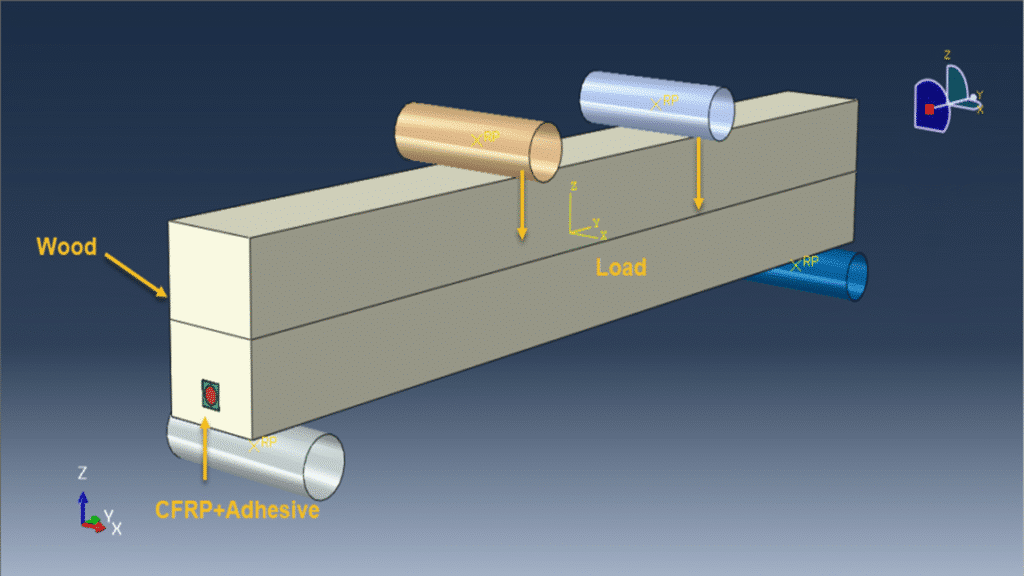


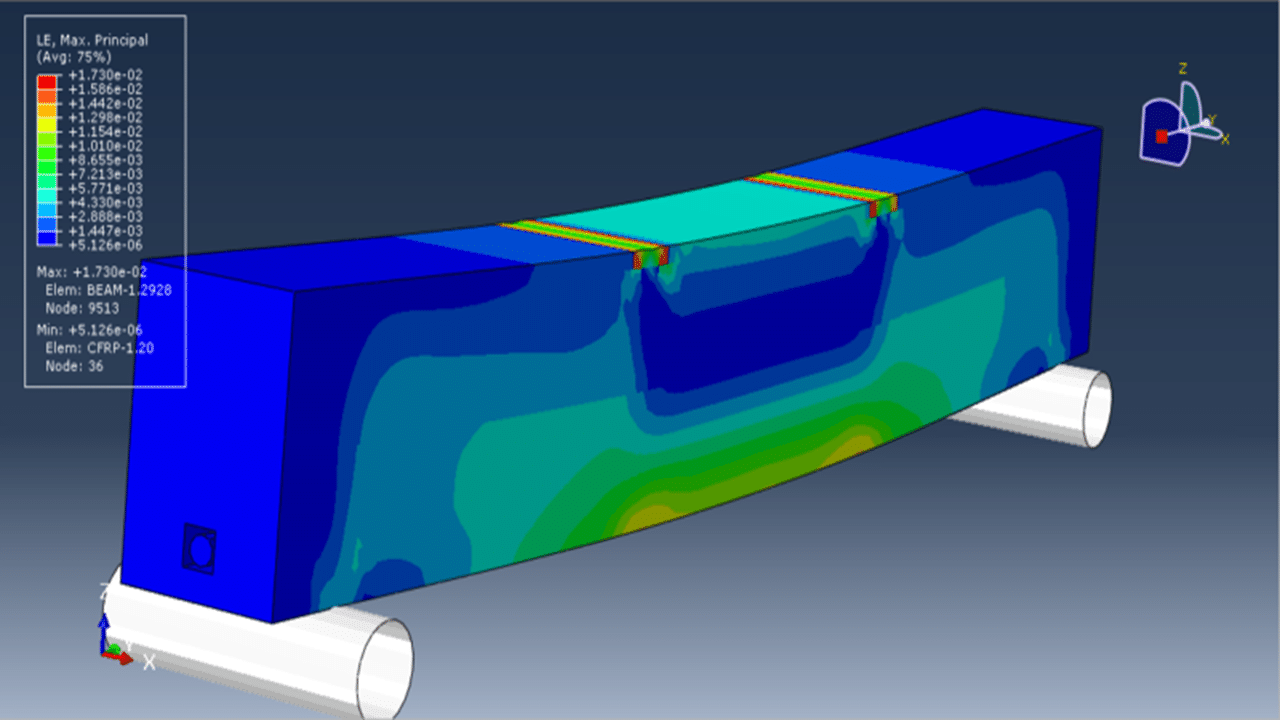


In this tutorial, the simulation of a dynamic four-point bending test on a timber beam reinforced with a CFRP rod and glue in Abaqus is investigated. The timber beam is modeled as a three-dimensional solid part with distinct tension and compression zones. The adhesive layer and CFRP rod are also modeled as solid parts.
Timber, a natural and sustainable construction material, has been used for centuries due to its excellent strength-to-weight ratio, low environmental impact, and ease of fabrication. Solid timber, specifically, is the focus of this study due to its wide application in structural elements.
To model material behavior, the wood and CFRP are defined using elastic properties with engineering constants and isotropic plasticity with Hill’s potential, enabling direction-dependent strength. The polyurethane (PUR) adhesive is modeled using elastic traction behavior combined with a cohesive damage model.
The dynamic explicit step is chosen to accelerate the analysis, and mass scaling is used to reduce computational time. Tie constraints are used to bond the adhesive with both CFRP and timber, while surface-to-surface contact is applied for interactions with rigid parts. Boundary conditions include fixed supports and displacement-controlled loading via rigid shells. Fine meshing is applied to ensure accurate stress and damage results.
After completing the simulation, results such as stress, strain, damage progression, and force-displacement responses are available for evaluation.

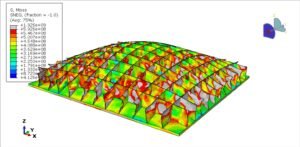
Abaqus
€68,00 €34,00

Abaqus
€77,00 €39,00
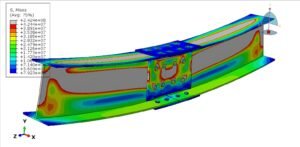
Abaqus
€79,00 €39,00

Abaqus
€75,00 €37,00

Abaqus
€76,00 €38,00
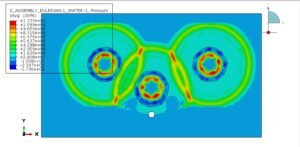
Abaqus
€79,00 €38,00
See more

Want to receive push notifications for all major on-site activities?